An Inclusive GAM 2017
By Amelia Ortiz-Gil, Lina Canas & Thilina Heenatigala
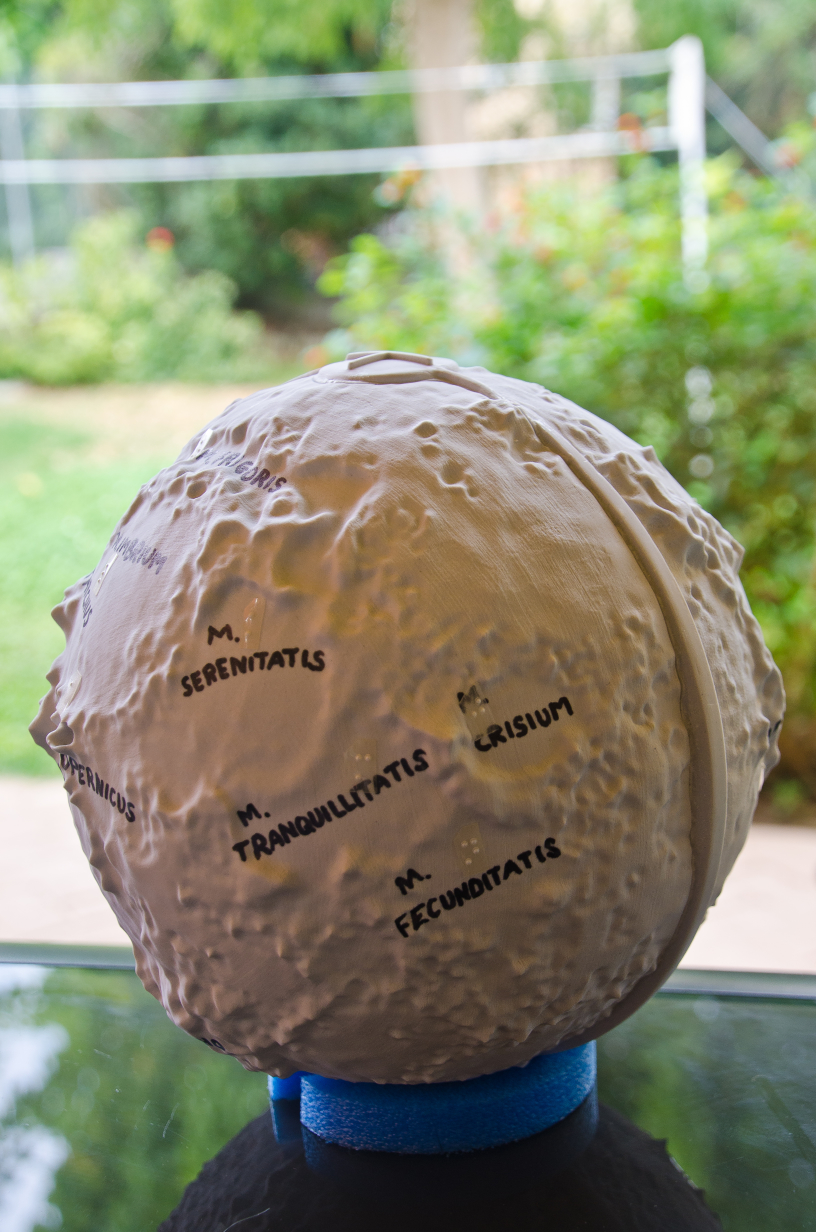 A moon model in 3D with tactile features, high contrast text and braille letters.
A moon model in 3D with tactile features, high contrast text and braille letters.
As you probably know already, the G in GAM stands for Global, meaning everywhere but also everybody. And this year we would like to encourage and help all of you who are organizing events and activities to address them truly to everybody.
All of us are different, but have many things in common, and one of them is the awe that we feel when contemplating or talking about the Universe. The night sky is a gift of nature that appeals to anyone, regardless of age, citizenship, gender, social status, physical condition or cognitive capabilities. Everybody is able to enjoy the cosmos in their own way, which means that communicators, outreach agents and people of the sort have the obligation to make sure that everybody enjoys as much as possible.
In some cases, this might seem very difficult, perhaps even impossible. But, should we agree with Alice when she says “One can’t believe impossible things?” Or will we answer together with the Queen “Why, sometimes I believed as many as six impossible things before breakfast! "? Well, maybe not six but two or three will not do any harm, right? A blind person "seeing" the night sky, or a deaf one "listening" to the radio emission from a pulsar or Jupiter. Can we do that?
It is difficult but not impossible. Technology is advancing pretty fast and there will be more and more aids in the future that will level the playground specially for people with physical special needs. But we also have something even more valuable: human ingenuity. And through carefully thinking and learning how people relate to the environment, and how they receive, perceive and process information we can design activities that will be suitable for most if not all the variety in capacities that a group from the general public can exhibit.
This is technically called the Universal Design for Learning (UDL), which can be applied both to formal and informal instruction. A crude approach to the basics of UDL is to try to convey the information through as many different sensorial channels as possible and to use different tools (texts, images, comics, different kinds of sound, music, etc.), without forgetting the usual communication rules like taking into account the previous knowledge of your public. This benefits everybody, not just people who might have some special needs. The more senses we apply in the learning process the better we remember the contents afterwards, and this applies to anyone regardless of their abilities.
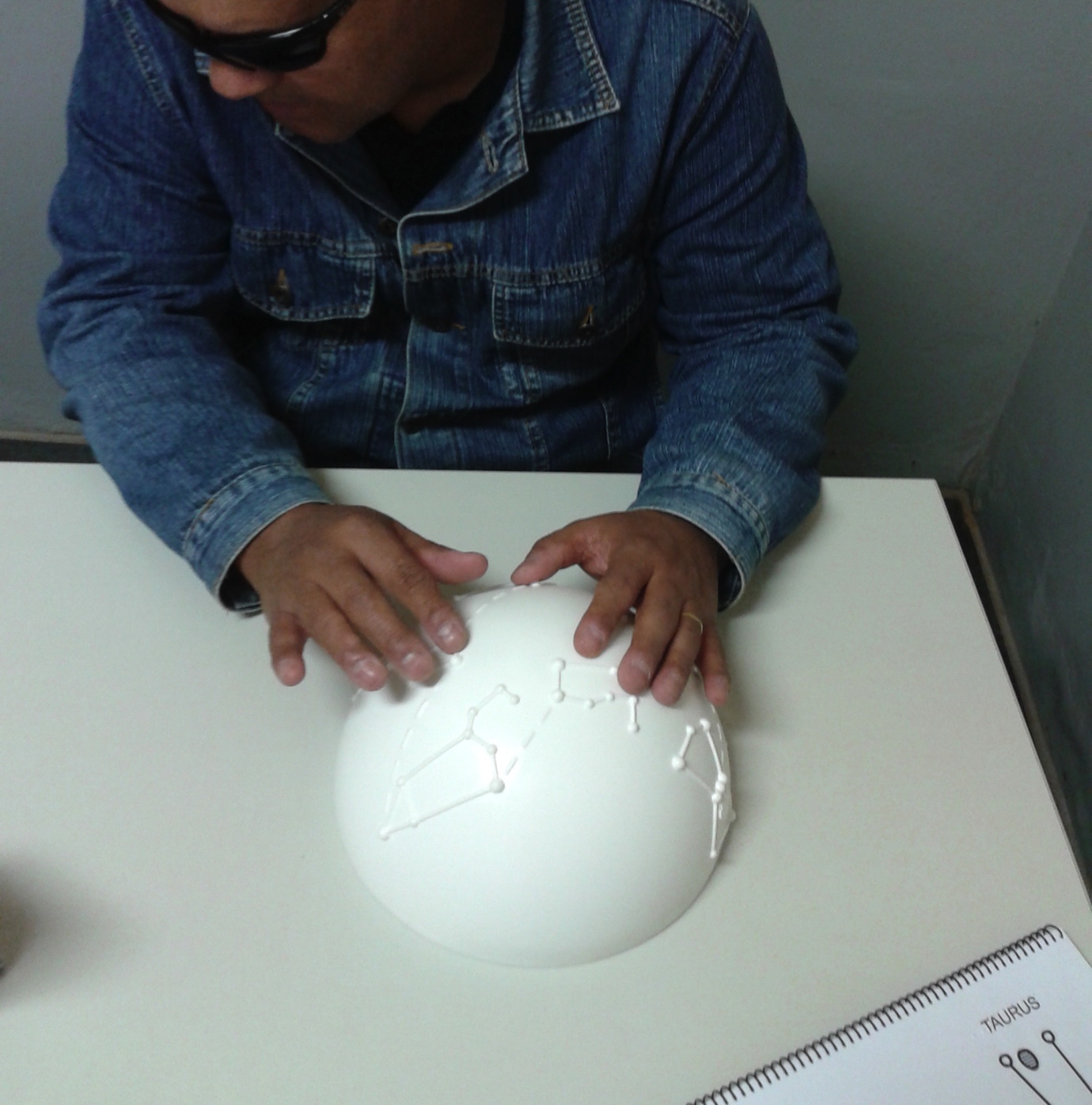 A dome with some northern constellations engraved. This is the tactile support for the planetarium show "The Sky in your Hands".
A dome with some northern constellations engraved. This is the tactile support for the planetarium show "The Sky in your Hands".
Have I convinced you that it is important to include everyone in our activities, and that we can do the 'apparently' impossible things? But you probably still think this is something very difficult to attain. Well, we have some good news!
The International Astronomical Union has recently created a Working Group on Inclusion and Equity, which gathers experts from all over the world who are trying to adapt astronomy to the variety of persons that populate this planet, thinking that no one should be left out. And to help and encourage you to think 'differently' to include everybody, we have teamed up this year with GAM 2017 and we'll be publishing selected resources every day during GAM that is accessible to a public broader than usual, mainly adapted to different kinds of physical needs but equally enjoyable to anyone. For example, it is great to see the Moon but touching its craters, maria and mountains is exciting to persons who are blind and to those with normal vision alike!
So, why not trying one or several of the activities that we are featuring for you during this month? You will also find the keys that will help you make your own accessible activities and events! And if you want to check more of these activities, please visit the repository at the working group's website.
Let's make this GAM 2017 a truly GLOBAL event for all!
 |
Dr. Amelia Ortiz-Gil is an astronomer at the Astronomical Observatory of the University of Valencia, Spain. She is currently working as an Outreach and Public Officer. She coordinated the astronomical activities for disabled people of the Spanish node during the International Year of Astronomy in 2009. Dr. Ortiz-Gil is currently co-chair of AWB's Program for People with Disabilities. |
 |
Lina Canas is currently based at National Astronomical Observatory of Japan in Mitaka, Tokyo working for the IAU Office for Astronomy Outreach. Throughout the years she has collaborated with many education and outreach associations in different projects, allowing her to know first-hand that the world is full of amazing people doing amazing things! Many of her hobbies overlap with her work, which sometimes is confusingly fun & confusingly stressing at the same time. |
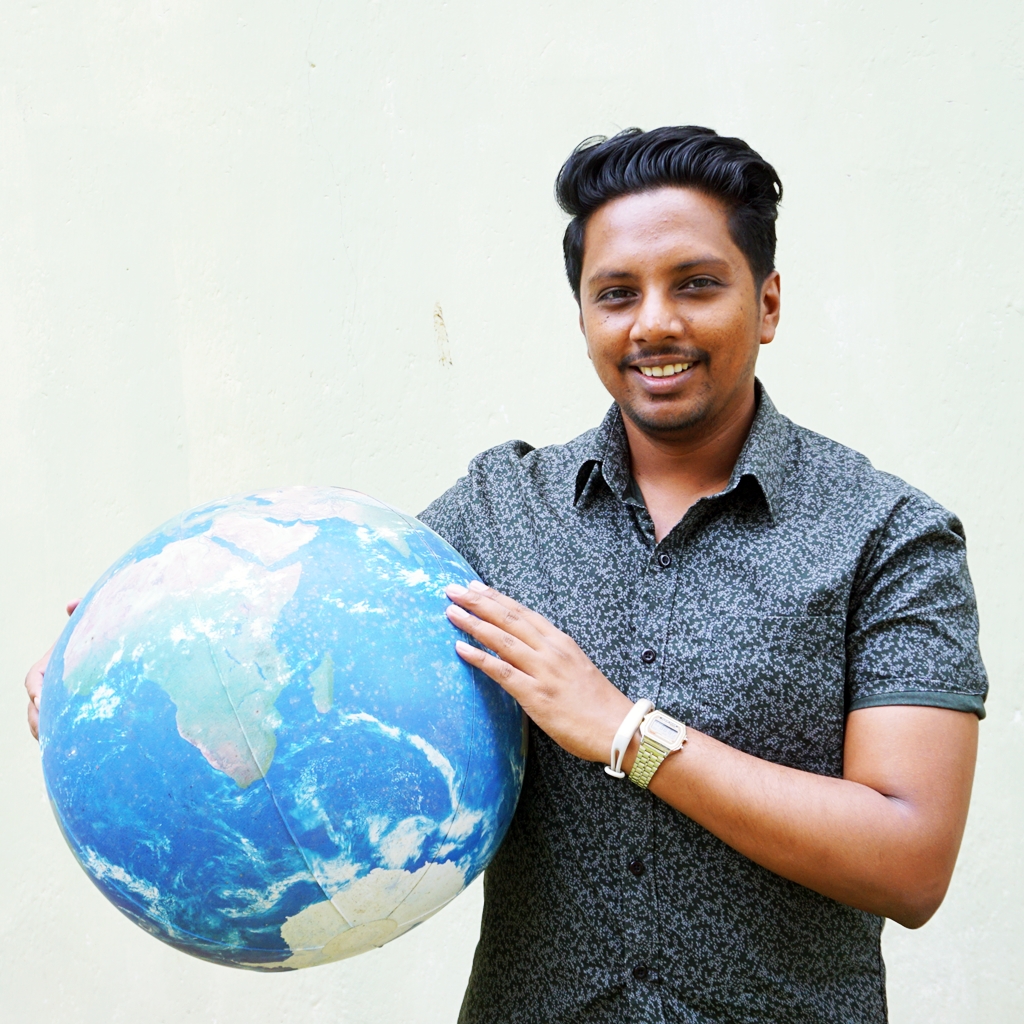 |
Thilina Heenatigala is an astronomy communicator with a focus on developing astronomy education globally. He currently collaborates with NUCLIO, Europlanet and IAU astroEDU at Leiden Observatory. Apart from astronomy, he keeps himself busy with traveling, black & white street photography, and social media storytelling. Follow him on Twitter @ThilinaH https://twitter.com/ThilinaH |
Astronomy for peace: The Columba-Hypatia project
By Eva Ntormousi

To make the constellation of Columba, the Dutch astronomer Petrus Plancius had to tame one of Orion’s large celestial hunting dogs, the constellation of Canis Major. He chopped off three stars from its tail, and named the new constellation “Dove”, in reference to the bird that brought Noah an olive branch, and hope, after the cataclysm. This small, understated constellation is a symbol of safety after a catastrophe, and survives in popular traditions as synonymous with peace.
Like this inconspicuous constellation, a small outreach initiative with the same name shines in the Southeast Mediterranean: A collaboration between GalileoMobile and the Association for Historical Dialogue and Research (AHDR), the Columba-Hypatia project will bring astronomy to students and teachers in schools throughout Cyprus.
Throughout 2017, Columba will engage the students, the educators, and the general public across the island, in carrying out fun and educational astronomy activities and workshops. Through these activities the goal is to stimulate the students' curiosity about the cosmos and to demonstrate the scientific method and how scientists employ it to discover new things about physics and astronomy.
In this playful process though lies something deeper and even more significant. Astronomy speaks directly to a fundamental human quest, the thirst of knowledge. In inspiring this curiosity in young people, Columba aims to promote interaction, meaningful communication, understanding and, eventually, a culture of peace and nonviolence across borders.
For centuries, Cyprus has been home to two vibrant communities, one Turkish- and one Greek-speaking, that now live divided due to a complex series of political and military conflicts. A remedy to this divide can only come through a continuous and arduous effort, not only from the international community, but most importantly, from the two communities themselves. One such initiative is the inter communal Association for Historical Dialogue and Research, whose mission is to promote historical understanding amongst the public, and more specifically, amongst children and educators.
The other half of the collaboration, GalileoMobile, is an itinerant, science-education initiative that brings astronomy closer to young people around the world. Since its creation in 2008, it has carried out expeditions in Argentina, Bolivia, Brazil, Chile, Colombia, Ecuador, India, Peru and Uganda, as well as extended actions in Portugal, Nepal, and the United States, reaching over 10,000 pupils and 900 teachers. Its vision for a world united “under the same sky” is embraced by the scope and mission of the AHDR. The collaboration between these two entities for the Columba project goes through the prism of a common cultural heritage, and the universality of human curiosity about the Universe.
The activities will mostly take place at the Home for Cooperation, a unique community centre located in the heart of Nicosia, and will comprise, among others, open lectures and star parties for the public. Educational material, including high-quality telescopes, will be donated directly to the visited schools, and the Home for Cooperation will keep additional telescopes, that will be made available to any school that requests them, for years to come!
One might wonder here, can we really make peace just by looking at the stars? Like a poet once said, “it is the gaze that makes the horizon”. Columba-Hypatia says, once we learn how to follow each other’s gaze, we might see the same horizons.

To learn more about Columba and join its activities in Cyprus, you can follow its page on Facebook, here.
The Columba-Hypatia project is funded by the Office for Astronomy for Development of the International Astronomical Union, and benefits from educational material from Meade, Universe Awareness, and ESO.
 Eva Ntormousi is an astrophysicist working at CEA, in France. She received her PhD from the Ludwig-Maximillins University of Munich in 2012. She has been involved in astronomy outreach since 2009.
Eva Ntormousi is an astrophysicist working at CEA, in France. She received her PhD from the Ludwig-Maximillins University of Munich in 2012. She has been involved in astronomy outreach since 2009.
Boundary Conditions
By Tom Gordon
How do you say it? 'Sorry humanity, we didn't find ET.' 'We are unique and we’ll never know why.'
After centuries of looking for other life forms in our universe, we’ve accepted that being alone is a strong possibility. However it’s still not an easy thing to have to admit. Now we are minutes away after 100’s of years of searching, to having to accept the most depressing answer to the question -
...are we alone in the universe?
Data from one of SETI’s (the search for extraterrestrial intelligence) many projects will be arriving from satellites around the Milky Way Galaxy in 5 minutes and will be instantly analysed. This data will essentially give us a definitive answer to this question.
It’s not an easy feeling. 5 minutes to go, and counting …
From late 1984 and for the next 300 or so years after that, SETI has been looking for intelligent Extra-Terrestrial life. It has been an incredible scientific journey and it is now coming to an end, although not due to a lack of funding. SETI has been well funded for decades due to a renewed interest based on the growing possibility that we may indeed be alone. No matter where in the universe that we have looked so far there have been no signs of life, and the number of places in the universe that life can be found is diminishing.
4 minutes to go …
It is also disappointing and sad to consider that the mission of explaining the origins and nature of life in the universe may never be answered. How do we know this? It has to do with the Drake equation. First proposed by radio astronomer Frank Drake in 1961, the equation calculates the number of communicating civilizations by multiplying several variables and it is our best attempt at estimating the probability of intelligent life in the universe It's usually written:
N = R* . fp . ne . fl . fi . fc . L
- N = The number of civilisations in the Milky Way galaxy whose electromagnetic emissions are detectable
- R* = The rate of formation of stars suitable for the development of intelligent life.
- fp = The fraction of those stars with planetary systems.
- ne = The number of planets, per solar system, with an environment suitable for life.
- fl = The fraction of suitable planets on which life actually appears.
- fi = The fraction of life bearing planets on which intelligent life emerges.
- fc = The fraction of civilizations that develop a technology that releases detectable signs of their existence into space.
- L = The length of time such civilizations release detectable signals into space.
We understand the terms in the Drake Equation and have refined them to acceptable levels with more and more satellites, instrumentation, analytical techniques, and testing.
Over time, as the number of parts of the universe that have been searched increases and the observable universe shrinks, SETI has been able to add a new component to the Drake equation. Now, in less than 4 minutes, this new component will be enough to determine if, N, is undefined or not.
The term extra component in the new Drake equation is a difference between the area of Observable Universe, Ou, and the Searched Universe Su. So the new Drake equation,
N = (R* . fp . ne . fl . fi . fc . L) / (Ou - Su)
is a ratio of what we expect to find divided by what we can physically find.
Back in the 20th Century we learned that the edge of the Universe is expanding faster than the speed of light. We’ve known about this phenomenon for just over 300 years. So our observable universe, or the amount of stuff we could ever see in the universe, is getting smaller. If Ou - Su = 0, then we’ve run out of universe to find ET in, and ….
3 Minutes …
With all the scary social implications aside, SETI has done some really great science. We’ve managed to send satellites and probes further away that we ever thought possible, finding out more about our universe, and us.
One of the coolest projects that SETI was involved in was sending a satellite to return with Voyager 1 to Earth. This was to see if there had been any ET interaction with the furthest satellite we’d sent out. To complete the Voyager project SETI needed to replace Voyager 1. So we sent 2 satellites out, one to bring Voyager 1 back and the other to replace Voyager 1. It was called Voyager 2.0 and has recently, in the last 3 years, reached the Oort cloud. It has returned some fascinating results of course, but we found nothing unexpected on Voyager 1 but none of that seems relevant at the moment.
2 minutes …
What if we DO see evidence for ET? Is humanity ready for that result? I’m not sure if we are. Does it even matter? Even if we find ET they’ll most likely move out of the Observable universe before we have any chance of contacting them. That’s an even bigger announcement. 'Hi humanity. We found ET, but we’re too late'.
1 minute …
Quick, to the observatory
We rush to the SETI observatory control room to be amongst our friends and our supporters in this moment that will define, once and for all our place in the universe. If we are alone who wins? Sure we’ve found something out, but at what cost?
30 Seconds …
If this data shows that there is no ET in this last place in the universe for us to look, we probably have our answer ...
10 Seconds …
People want to know if we’re alone. It matters to us. We’re a species of explorers and always have been. To be told that there’s no-one out there to find might diminish some of us as humans.
5 …
For some strange reason I half expected to get a tap on the shoulder just now, turn around and see an Alien waving at me.
4 …
BOO!
Breathe …
3 …
I’m imagining things.
2 …
This is going to be a big couple of days …
1 …
This is going to be a big rest of humanity ...
The end.
 Tom Gordon is a science communicator at the School of Physics. His role is to provide and develop outreach programs to, mainly, High school students in order to assist them with their studies, provide mentors and information about University life and expectations. In addition, he runs many other School and holiday programs such as Gifted and Talented workshops and he is the Chair of the School of Physics outreach committee.
Tom Gordon is a science communicator at the School of Physics. His role is to provide and develop outreach programs to, mainly, High school students in order to assist them with their studies, provide mentors and information about University life and expectations. In addition, he runs many other School and holiday programs such as Gifted and Talented workshops and he is the Chair of the School of Physics outreach committee.
He did a degree in Astronomy and Astrophysics as well as a Graduate Diploma in Science Communication at the ANU, then a Masters Degree in Space Studies in France. After returning to Australia he was a High School teacher for 4 years in Sydney, and a stint at the National Measurement Institute as a legal metrology policy officer.His role also extends to media enquiries and publications, as well as in-reach to current university students as well as Science Teachers workshops and forums.
In his spare time he is on the executive of the Parents and Citizens committee at his daughters' school and he has also become involved and very interested in the Australian Political process by joining and being active in a minor political party.
On a clear night you can look up and see infinity. But what happens if you can’t see the stars?
By Murray Henstock
This is a question my students have asked me many times and it is a problem with living in a suburban or city area. The billions of lights all around us block out the majesty of the heavens almost totally. Except for the brightest few.
Sydney, in addition to it ever present, star blocking evening glow can also be covered over by clouds quite often. Of late most major astronomical events have been blocked from view from those within Sydney due to cloud cover or ambient city light.
Additionally findings ways to connect my students with the stars poses a challenge for those who cannot venture out in the evening, usually quite late at night, to make their observations. So how do we overcome these limitations.
If we can’t take ourselves to the stars, we bring the stars closer to us. We build a planetarium.
And this set the stage for a unique student challenge. How do we build a planetarium with no funds, no access to construction grade material, but a heart full of inspiration, determination and perseverance.
As so it was we set forth on a journey to build our school’s first planetarium. It was a STEM initiative like no other with an element of sustainability as we opted to use recycled cardboard only. Students needed with wishing the geometry of a geodesic dome large enough for a class of students to sit comfortably within. This involved the creation of several triangles and rectangles that would be held together with bull-dog clips and will power.

Our aim was to create a unique resource that could be used by not just our school but the local primary schools and community as a resource to bring astronomy to the students and their families in an accessible and educational way.
It was a labour of love and we had our challenges along the way. Fate seemed to be against us as we strove to erect the dome that had come to represent our hopes and dreams. And despite a number of failures and set-backs we never gave up and one afternoon we succeeded!
We had done it. We had created a 3.6m geodesic dome planetarium out of nothing but recycled cardboard and bulldog clips. The result of months of volunteer hours after school and lunch time effort. Throughout we had built not just a worthy structure, one that promised to bring the universe that much closer to our students, but we had also learned teamwork, leadership and the value of never giving up.
The dome lived for 10 minutes.
Throughout our construction there was one element destined to doom our project. Some of the recycled cardboard failed and as we sighed a collective sigh of relief the first signs of imminent danger appeared.
First a pop, then a creak and then with tear inducing finality the dome came crashing down.
Our dream to bring the cosmos closer had suffered perhaps its most fatal set-back. But one that might prove to be its eventual strength. For we have not given up. For now our students and the teachers that support them are seeking a new and improved way to re-envision their dream of an onsite planetarium to be used to bring Astronomy to a community of students, friends and family hungry to explore the universe.
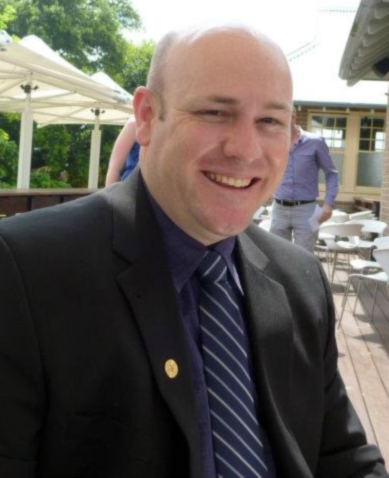 Murray Henstock is a professional educator specialising in STEM through Science, Astronomy, Robotics and Education through experiential outdoor learning. He is a member of the Inspiring Science Network, a mentor facilitator for the UTS [email protected] Science Summer School, a participant in the Galileo Teacher Training Program (GTTP), the National Australian Maths and Science Partnership Program (AMSPP) and a recipient of the Honeywell Educators @ Space Academy scholarship in 2013. Murray has not only attended Space Camp USA in Huntsville Alabama, he was also part of the team taking a number of Australian students to Space Camp Turkey in 2014. Murray has spent the last 16 years involved in developing and delivering youth and personal development programs aboard tall ships culminating in the development of a personal development program that can be adapted to any vessel or situation at land or sea. He now runs the Robotics, STEM Exploratorium and Astronomy programs at school and is developing a series of cross KLA STEM programs and units of work based on Space Exploration and its impact on humanity.
Murray Henstock is a professional educator specialising in STEM through Science, Astronomy, Robotics and Education through experiential outdoor learning. He is a member of the Inspiring Science Network, a mentor facilitator for the UTS [email protected] Science Summer School, a participant in the Galileo Teacher Training Program (GTTP), the National Australian Maths and Science Partnership Program (AMSPP) and a recipient of the Honeywell Educators @ Space Academy scholarship in 2013. Murray has not only attended Space Camp USA in Huntsville Alabama, he was also part of the team taking a number of Australian students to Space Camp Turkey in 2014. Murray has spent the last 16 years involved in developing and delivering youth and personal development programs aboard tall ships culminating in the development of a personal development program that can be adapted to any vessel or situation at land or sea. He now runs the Robotics, STEM Exploratorium and Astronomy programs at school and is developing a series of cross KLA STEM programs and units of work based on Space Exploration and its impact on humanity.
Chandra: A Telescope Without Borders
By Megan Watzke
The Chandra X-ray Observatory is NASA’s premier X-ray telescope. In operation since its launch aboard the Space Shuttle Columbia in 1999, Chandra has studied hundreds of cosmic objects during thousands of observations over its 17-year mission thus far.

As one of NASA’s Great Observatories (along with Hubble, Spitzer, and the now-deorbited Compton Gamma-ray Observatory), Chandra is a crown jewel of American astronomy.
However, Chandra is not just a national treasure, it is a resource for the entire world. Researchers from any country may apply for observing time on Chandra. In fact, scientists from over 100 countries have been awarded Chandra observing time during its lifetime.
How exactly is it decided who gets to use this X-ray facility that travels an elliptical orbit taking it a third of the way to the Moon? Observing time is determined by the proposal process. Anyone from any institution can propose to use Chandra, and each proposal is considered under the same rules.
Once all of the proposals are submitted annually (the Chandra deadline is usually in mid-March), they are separated into various topics – black holes, neutron stars, galaxies, etc. From there, a team of experts in that particular field evaluates the proposal to determine whether or not it represents a good use of Chandra time scientifically. If a proposal is picked, then the person is notified and the observation is scheduled in the next year (called a “cycle” in NASA-speak).
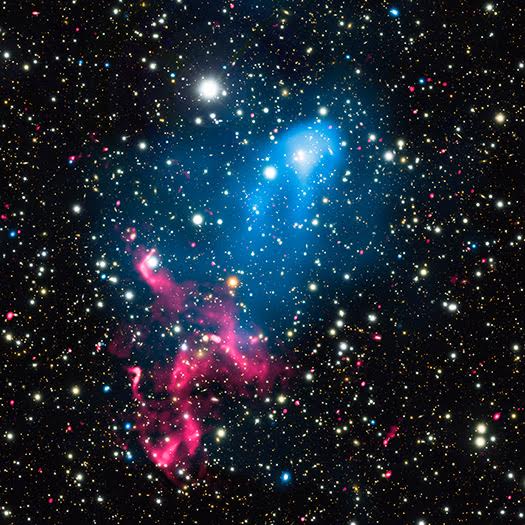


It takes a lot of work from many people – from the scientists who propose to the experts that review to the professionals who schedule – to bring an idea to use Chandra to fruition. However, all of this diligence pays off when researchers from around the world are able to make exciting and significant discoveries about the Universe we live in. To help celebrate Global Astronomy Month, please take a look at some of the latest amazing things that Chandra has helped us find: http://chandra.si.edu/press/
 Megan Watzke is the public affairs officer for the Chandra X-ray Observatory, a position she has held since 2000. Her responsibilities include the dissemination of Chandra’s science results to the general public through press releases, press conferences, informal education and other activities.
Megan Watzke is the public affairs officer for the Chandra X-ray Observatory, a position she has held since 2000. Her responsibilities include the dissemination of Chandra’s science results to the general public through press releases, press conferences, informal education and other activities.





